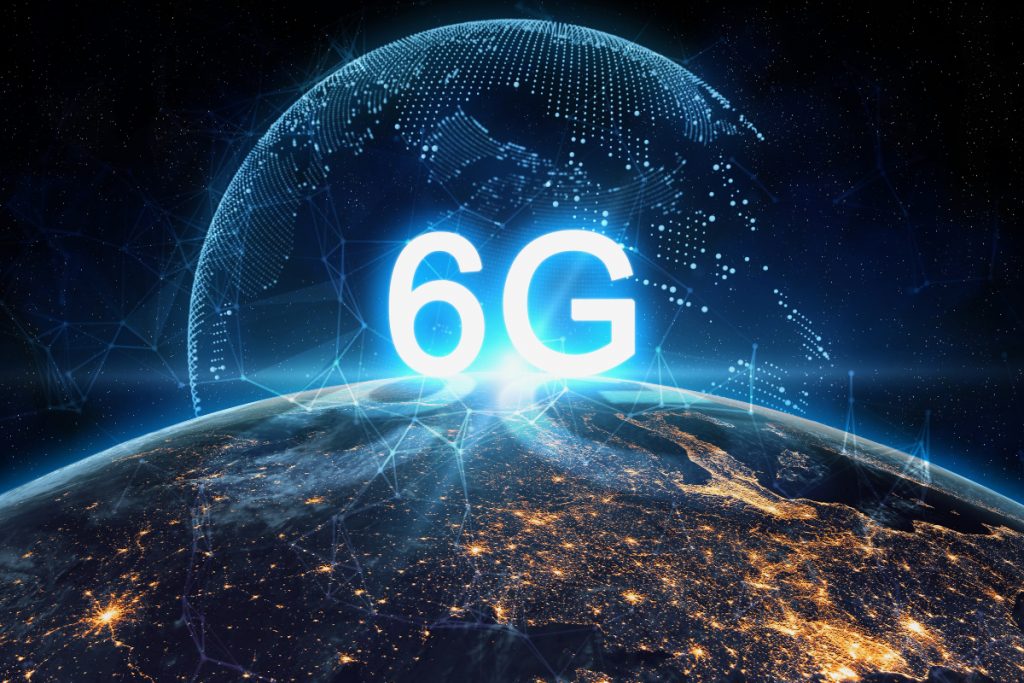With 5G networks turning out around the globe, engineers are transforming their focus to the following incarnation.
Mobile-phone modern technology has altered the way humans understand as well as interact with the globe as well as with each other. It’s difficult to think of a technology that has much more strongly designed 21st-century living.

The most current technology– the fifth generation of mobile criteria, or 5G– is presently being released in choose locations around the globe. Exactly how will 6G differ from 5G, and what kinds of interactions as well as activity will it enable that will not be possible with 5G?
Today, we get a solution of kinds, thanks to the job of Razvan-Andrei Stoica and Giuseppe Abreu at Jacobs University Bremen in Germany. These people have mapped out the constraints of 5G as well as the aspects they assume will certainly drive the advancement of 6G. Their verdict is that artificial intelligence will be the primary vehicle driver of mobile technology which 6G will be the enabling pressure behind an entirely new generation of applications for maker knowledge.

By any requirements, 5G is a considerable advance on the previous 4G criteria. The first 5G networks already use download rates of up to 600 megabits per 2nd and have the possible to obtain considerably quicker.
5G is clearly much better in this respect and can also change many landline connections.
The most considerable advantages go beyond these headline numbers. 5G base stations, for instance, are created to manage up to a million connections, versus the 4,000 that 4G base stations can cope with. That should make a distinction to interaction at significant celebrations such as sporting events, presentations, and so forth, as well as it could make it possible for all type of applications for the net of points.
Then there is latency– the time it takes for signals to travel throughout the network. 5G is designed to have a latency of simply a solitary millisecond, compared to 50 nanoseconds or even more on 4G. Any kind of player will inform you just how essential that is, since it makes the remote of video gaming personalities a lot more receptive. Yet various telecoms operators have actually demonstrated just how the exact same advantage makes it feasible to regulate drones more properly, and also even to carry out telesurgery using a mobile connection.
All this must be feasible with reduced power needs to boot, and present claims suggest that 5G tools ought to have 10 times the battery lives of 4G gadgets.
So just how can 6G much better that? 6G will, of course, provide even quicker download and install speeds– the current reasoning is that they could approach 1 terabit per secondly.
What kind of transformative improvements could it provide? The response, according to Stoica and also Abreu, is that it will enable swiftly altering cooperations on large ranges between smart agents resolving complex obstacles on the fly as well as bargaining services to complicated issues.
Take the issue of working with self-driving automobiles with a major city. That’s a significant difficulty, given that some 2.7 million vehicles enter a city fresh York daily.
The self-driving automobiles of the future will certainly require to be familiar with their location, their environment and also how it is changing, as well as other roadway users such as bicyclists, pedestrians, as well as other self-driving vehicles. They will certainly require to discuss passage via joints and also enhance their path in such a way that reduces trip times.
That’s a substantial computational difficulty. It will call for autos to swiftly develop on-the-fly networks, as an example, as they approach a details junction– and after that abandon them virtually instantly. At the same time, they will be part of more comprehensive networks computing courses and trip times and so forth. “Communications will as a result be required in huge amounts, to solve large distributed troubles where substantial connectivity, big data quantities and ultra low-latency beyond those to be provided by 5G networks will be essential,” claim Stoica and Abreu.
Certainly, this is just one example of the type of cooperation that 6G will certainly make possible. Stoica and also Abreu envision a variety of various other distributed challenges that come to be tractable with this sort of strategy.
These will certainly be based upon the real-time generation and joint handling of big quantities of information. One noticeable application is in network optimization, yet others consist of financial-market surveillance and also planning, health-care optimization, and “nowcasting”– that is, the ability to respond and also forecast to events as they happen– on a previously unthinkable range.
Synthetically intelligent agents are clearly predestined to play an essential role in our future. “To harness truth power of such representatives, joint AI is the secret,” state Stoica and also Abreu. “As well as by nature of the mobile society of the 21st century, it is clear that this cooperation can only be attained by means of cordless communications.”
That’s an interesting vision of the future. There is much negotiating and horse-trading to be done before a collection of 6G standards can also be outlined, not to mention wrapped up. Yet if Stoica and Abreu are appropriate, expert system will certainly be the driving pressure that shapes the interactions networks of the future.
The most current technology– the 5th generation of mobile requirements, or 5G– is currently being deployed in choose places around the globe. Exactly how will 6G differ from 5G, and also what kinds of communications as well as task will it allow that won’t be possible with 5G?
These people have actually mapped out the constraints of 5G and also the aspects they think will drive the development of 6G. The very first 5G networks already provide download speeds of up to 600 megabits per 2nd as well as have the potential to obtain dramatically quicker. “Interactions will consequently be necessary in substantial quantities, to solve huge dispersed troubles where huge connectivity, large data volumes and ultra low-latency beyond those to be offered by 5G networks will be necessary,” say Stoica and Abreu.


